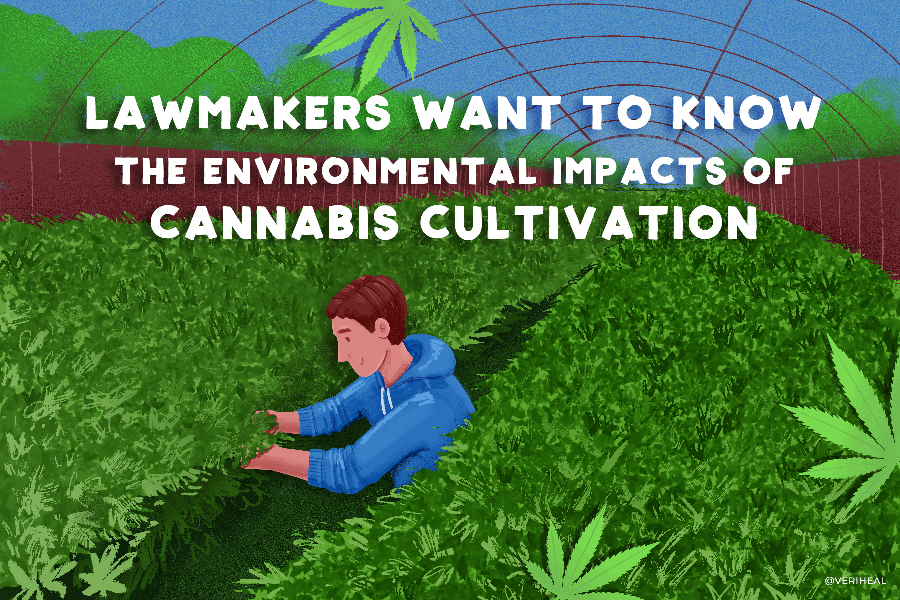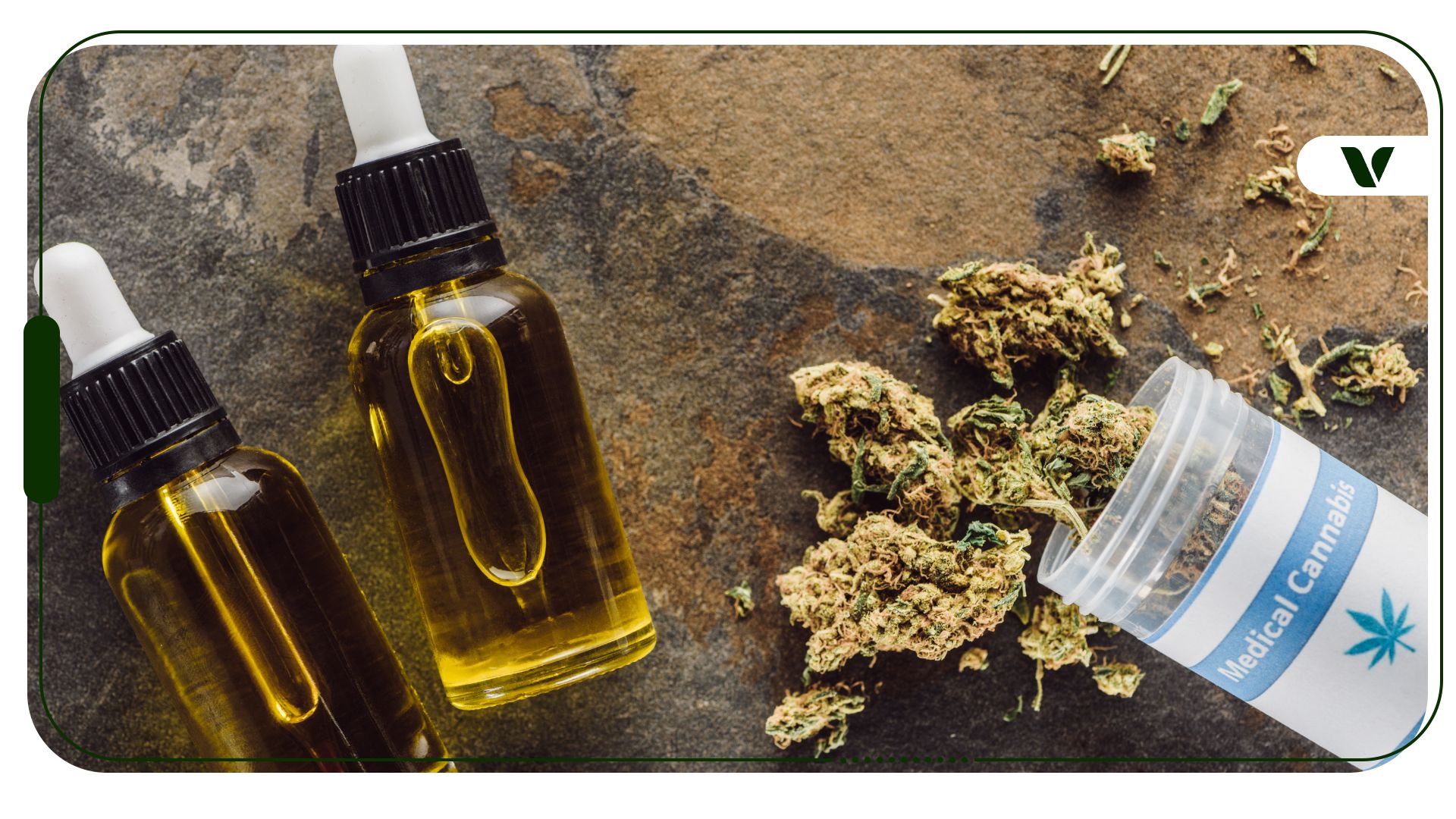Two lawmakers are asking about the environmental impacts of cannabis cultivation, and they’re recommending that a study be conducted to investigate the matter. According to media reports, “Republican Reps. Earl Carter of Georgia and Doug Lamborn of Colorado wrote in a letter obtained by the Washington Examiner that ‘the American people must have a better understanding of the environmental costs of this rapidly growing industry.'”
Even though this question is clearly designed to be yet another hurdle for cannabis reform, it’s still a legitimate one. Cannabis can be cultivated in harmony with nature, but it can also strip the land of natural resources while leaving behind an incredibly toxic footprint on the surrounding environment if done incorrectly. Let’s explore the environmental impacts of cannabis cultivation.
Legal Cannabis Operations vs. Illegal Cannabis Grows
Legal cannabis operations are held accountable for their actions. Illegal cannabis grows are only liable when someone gets busted. Illegal cannabis grows can leave a devastating mark on the environment due to the use of chemicals that are banned in the production of legal cannabis. Some people will put anything on cannabis to help it produce larger yields. Here are some of the pesticides that are not permitted to be used on cannabis crops in the state of California:
- Aldicarb DDVP (Dichlorvos)
- Paclobutrazol
- Carbofuran
- Etofenprox
- Chlordane
- Fenoxycarb
- Spiroxamine
- Thiacloprid
- Methyl parathion
- Daminozide
Illegal cannabis grows will often steal power, divert natural water resources, clear trees, leave garbage scattered around the surrounding area, and/or pump harmful chemicals into the environment that hurt the ecosystem. Another supposedly big issue with cannabis legalization in America is the potential increase in power consumption across the nation. Cannabis grows—legal and illegal alike—require high amounts of electricity. Some estimates suggest that if cannabis were legal in America, the demand for electricity could increase by as much as 65%.
Cannabis Prohibition Hurts the Environment
By making cultivation regulation complicated and allowing illegal grow operations to continue, federal marijuana prohibition hurts the environment. Under legal supervision, a state like Texas or even California could grow all the cannabis for the country outdoors or in greenhouses, greatly reducing the dependency on electricity for cannabis cultivation.
Of course, that would mean it would need to be legal to transport across state lines like other crops. But wouldn’t that mean one state would reap all the money? How would each state make up that financial loss of not having cultivation licenses, business licenses, and other monetary requirements to conduct a legal cannabis business coming into their state? When states legalize cannabis, they stand to make hundreds of millions of dollars. For example, New York expects to collect over $1 billion in cannabis tax alone over the next six years.
Why You Should Get Your Medical Marijuana Card
Veriheal has satisfied millions of patients nationwide by giving them access to these benefits
- Larger purchase limits
- Peace of mind
- Enhanced legal protection
- Access to higher potency strains
- Save up to 25% on cannabis purchases
- Skip the line at the dispensary
Continued marijuana prohibition also creates opportunities for would-be underground market growers. A large driving force behind cannabis legalization is to help eliminate the illicit market for cannabis, which can be dangerous for consumers as well as environmentally harmful. As long as federal marijuana prohibition exists, the illicit cannabis market will too.
How Can We Improve Cannabis Cultivation?
Aside from legalizing cannabis, is there a way to lessen the environmental impacts of cannabis cultivation? Cannabis can use a lot of electricity and water during cultivation. It can also be grown using no electricity and with minimal irrigation in climates that experience average to good rainfalls. When growing outdoors using the sun, rain, and organic ingredients like bat guano, earthworm castings, kelp, fish meal, and molasses, quality cannabis can be cultivated—and lots of it. Outdoor cannabis plants can produce pounds of buds each, whereas indoor plants only produce a few ounces on average.
New methods of cultivation, such as living soil, companion plants, water reclamation, and stacked vertical growing, are improving the environmental efficiency of growing cannabis. Water consumption is always an issue with cannabis cultivation. Some studies suggest a cannabis plant that produces 6 pounds of flower will require 6 gallons of water a day to grow.
Coming from someone who grows indoors, that seems way off to me. I water six plants with 3 gallons of water an average of two times per week for four months. This comes to 96 gallons of water. My average yield from six plants is about 12 ounces. Divide my water usage of 96 gallons by 12 ounces of flower produced, and each ounce of cannabis would have used 8 gallons of water throughout the grow.
Current crops that consume mass amounts of water are:
- Rice
- Alfalfa
- Soybean
- Wheat
- Sugarcane
- Cotton
And let’s not forget about another water-heavy product: beef. A cow is said to consume about 20 gallons of water a day. If politicians truly have any real concern about the environmental impacts of cannabis cultivation, they can end their ill-informed campaign of marijuana prohibition. That would not only make it easier to regulate cannabis grows, but it would also open countless doors for research and development regarding optimized growing strategies and so much more.
Author, Share & Comments







